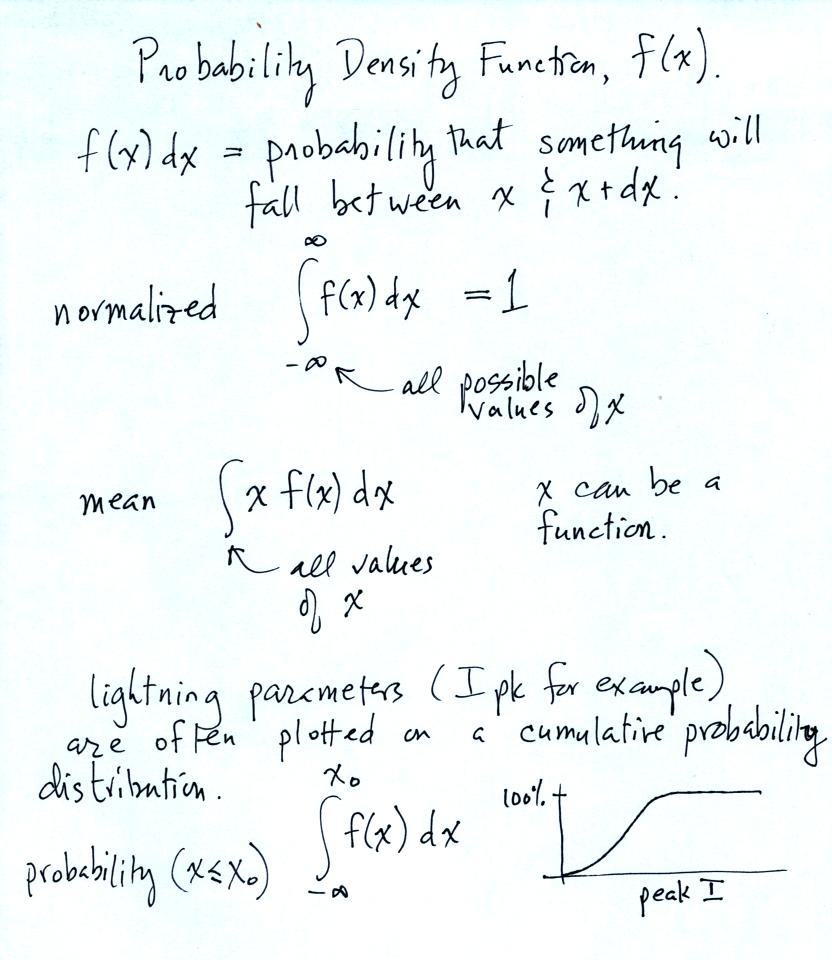
A basic review of probability
density or distribution functions.
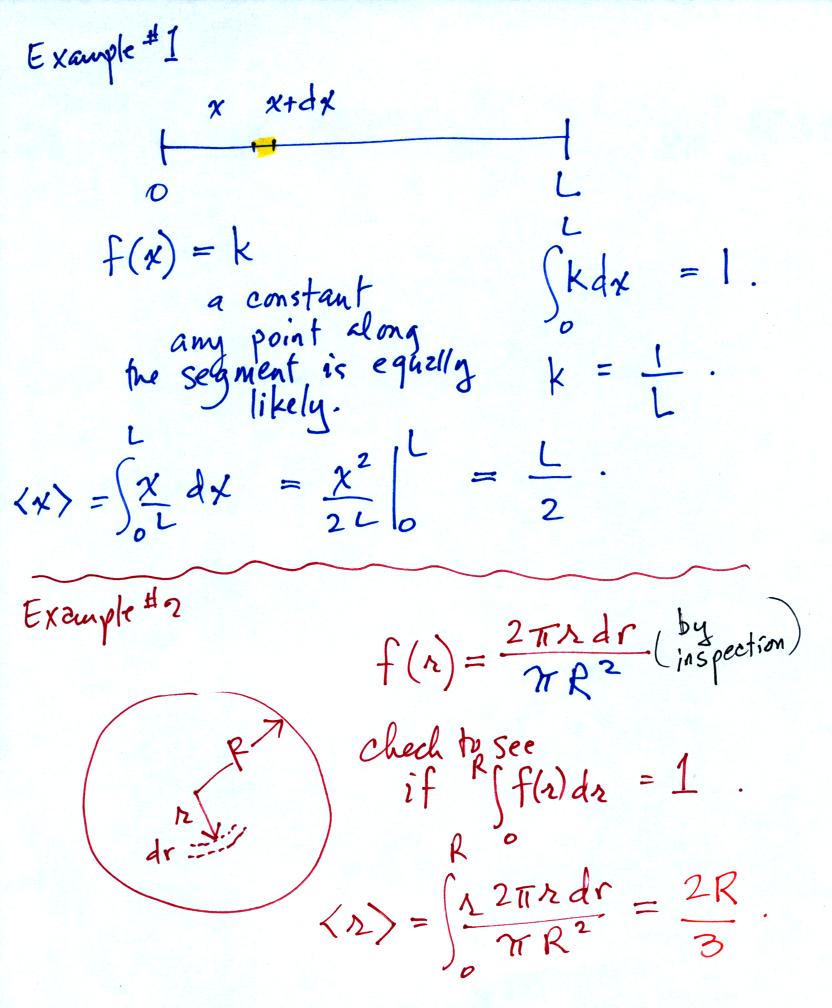

A couple of example problems.
In the first problem we find the probability that a point falls between
x and x+dx on a line of length L.
In the second problem we determined the probability that a point falls between r and r+dr in a circle of radius R. You should verify that the probability function is normalized. The mean r, <r>, is calculated.
We spent most of the class deriving the nearest neighbor distribution.
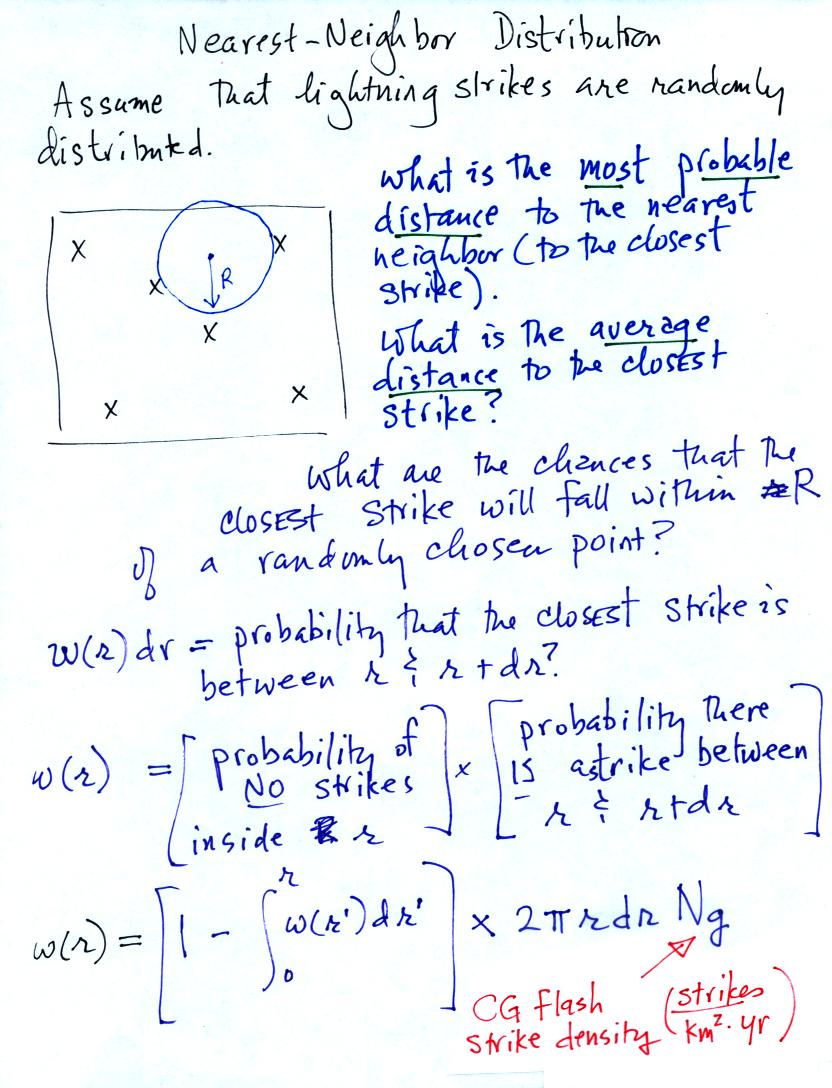
The nearest neighbor function gives you the probability that the
closest lightning strike is between r and r+dr away from a random
point. Application of this probability function to lightning was
the subject of an article handed out in class.
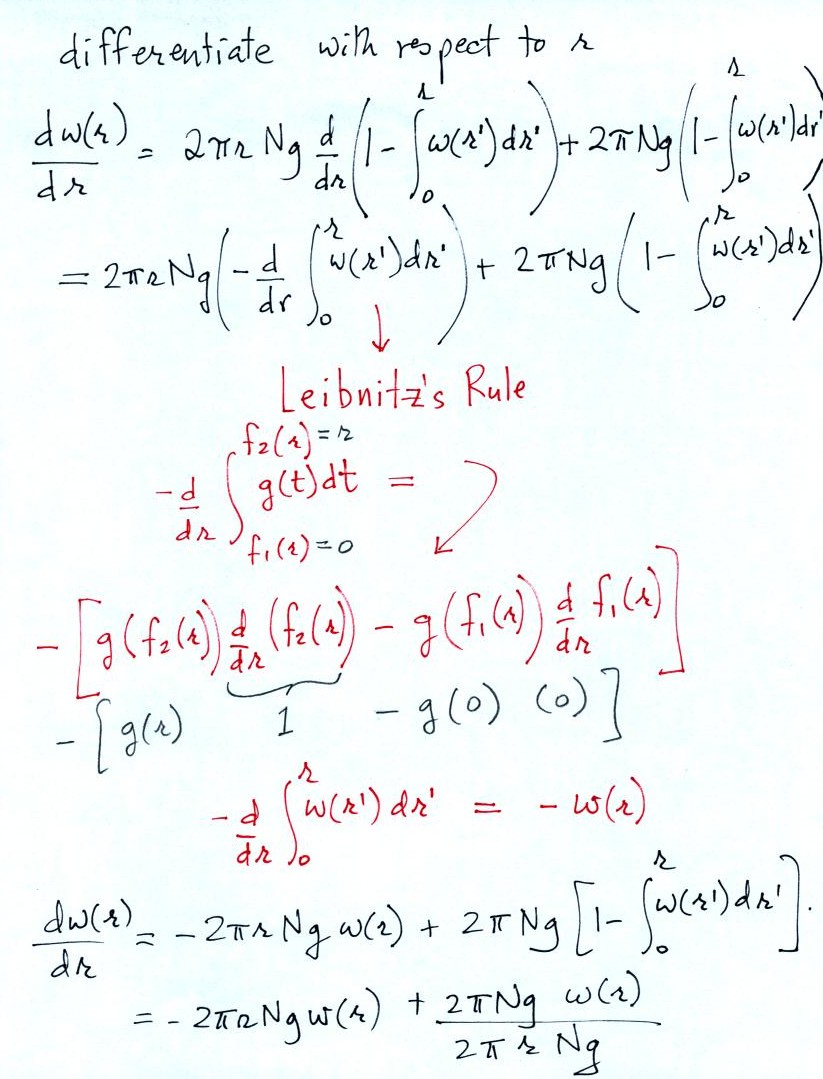
There are a few "tricky" steps in the derivation, so it was done in class (this is normally assigned as a homework problem). It isn't essential that you understand all the steps, they are given just in case you are curious.
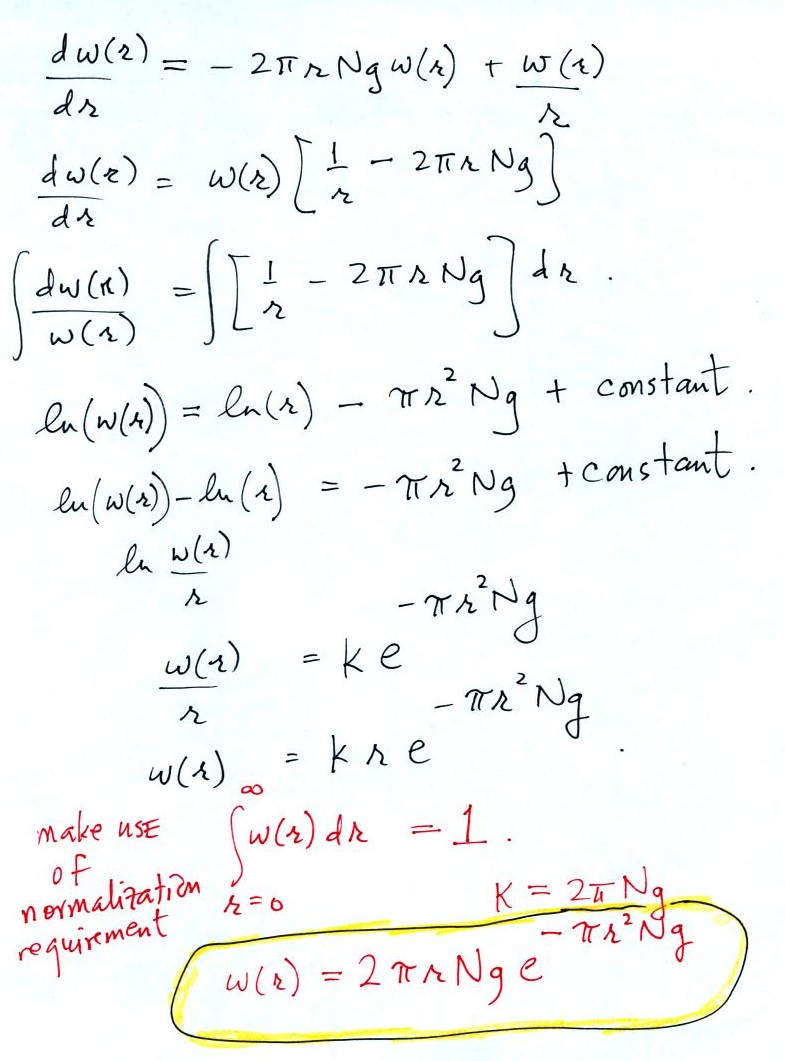
In the second problem we determined the probability that a point falls between r and r+dr in a circle of radius R. You should verify that the probability function is normalized. The mean r, <r>, is calculated.
We spent most of the class deriving the nearest neighbor distribution.


There are a few "tricky" steps in the derivation, so it was done in class (this is normally assigned as a homework problem). It isn't essential that you understand all the steps, they are given just in case you are curious.

The distribution function is shown
at the bottom of this page.

This figure shows the 24,790 cloud to ground strikes in a 51 km by
51 km area centered on the Main Gate at the U. of Az. These
strikes occurred between Jan. 1, 2000 and Sept. 23, 2002, a nearly 3
year period. One thing to notice is that the points appear to be
pretty uniformly distributed. We can use this data to estimate
the CG flash area strike density.
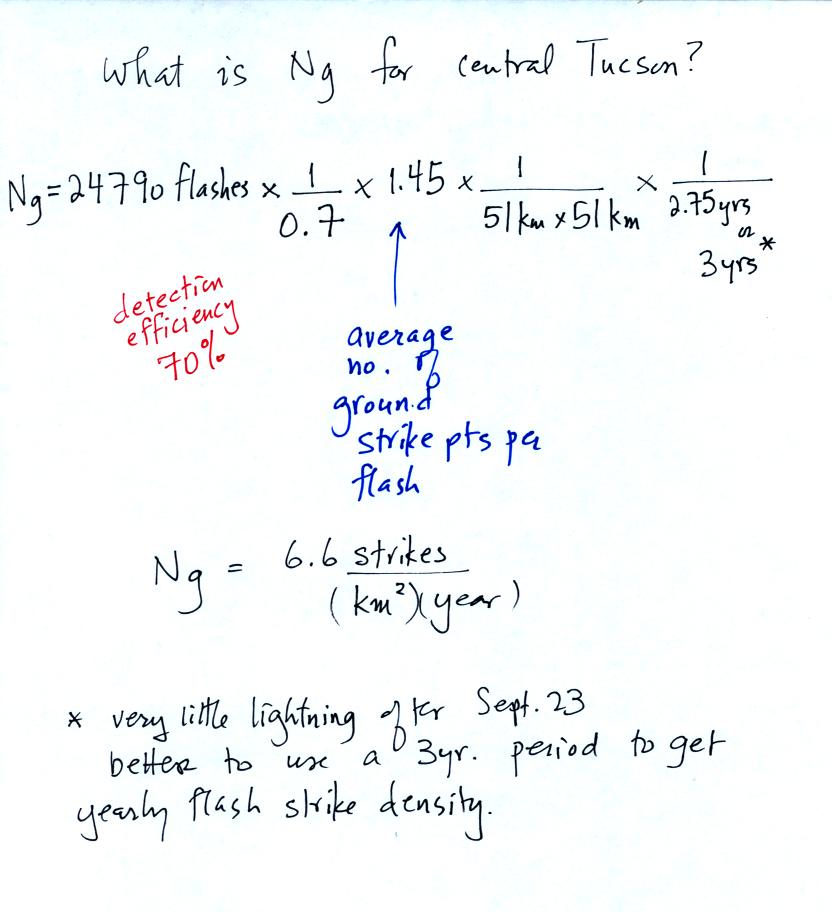
This figure shows how that is done. We multiply 24790 by 1/0.7 to correct for the 70% detection efficiency of the lightning locating network. We then multiply by 1.45, the average number of strike points per flash (see the next figure). We divide by the 51 km x 51 km area and divide by 3 years (there is very little lightning between Sept. 23 and Dec. 31). On average there are 6.6 strikes per square kilometer per year in the Tucson area.
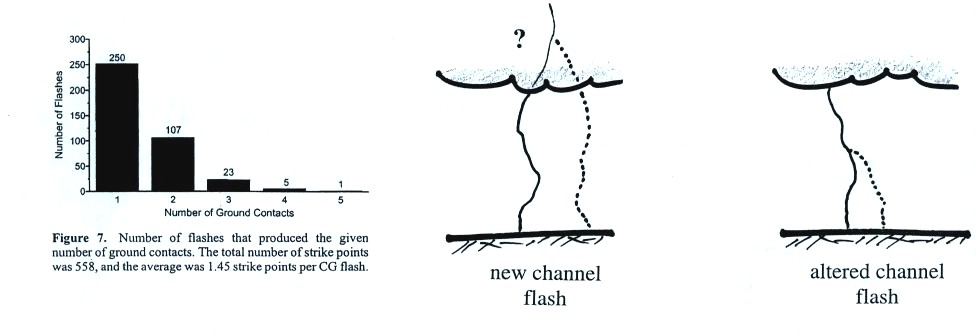
This is a portion of a figure handed out earlier in the semester. The left most figure is where the average 1.45 strike points per flash value came from.


This figure shows how that is done. We multiply 24790 by 1/0.7 to correct for the 70% detection efficiency of the lightning locating network. We then multiply by 1.45, the average number of strike points per flash (see the next figure). We divide by the 51 km x 51 km area and divide by 3 years (there is very little lightning between Sept. 23 and Dec. 31). On average there are 6.6 strikes per square kilometer per year in the Tucson area.

This is a portion of a figure handed out earlier in the semester. The left most figure is where the average 1.45 strike points per flash value came from.